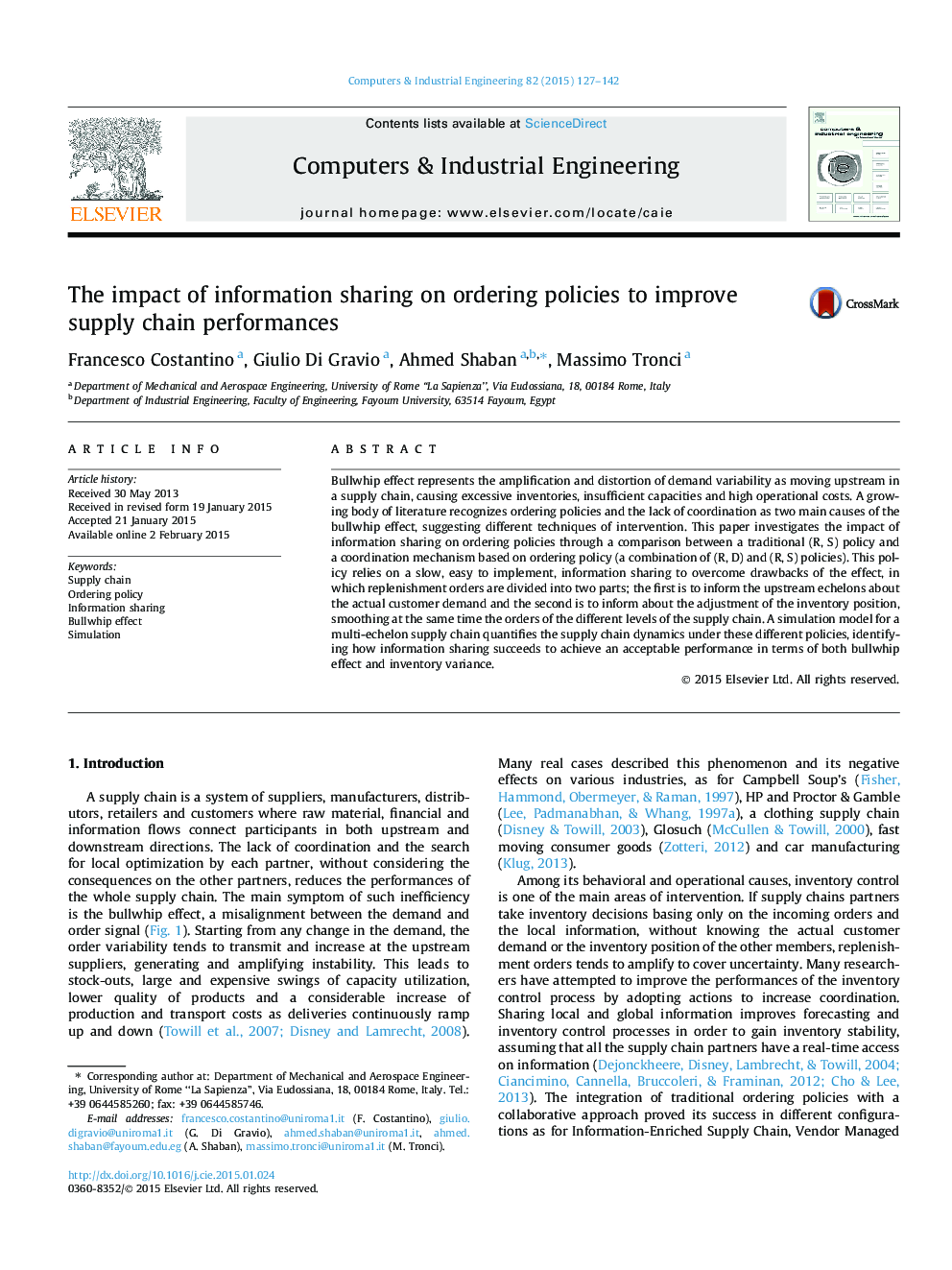| Article ID | Journal | Published Year | Pages | File Type |
|---|---|---|---|---|
| 1133727 | Computers & Industrial Engineering | 2015 | 16 Pages |
•We study bullwhip effect and inventory stability in a multi-echelon supply chain.•The impact of information sharing in supply chain is investigated via simulation.•We first examine the supply chain performances under a traditional (R, S) policy.•An easy-to-implement information sharing ordering policy (IS) is evaluated.•The IS outperforms the (R, S) in terms of bullwhip effect and inventory variance.
Bullwhip effect represents the amplification and distortion of demand variability as moving upstream in a supply chain, causing excessive inventories, insufficient capacities and high operational costs. A growing body of literature recognizes ordering policies and the lack of coordination as two main causes of the bullwhip effect, suggesting different techniques of intervention. This paper investigates the impact of information sharing on ordering policies through a comparison between a traditional (R, S) policy and a coordination mechanism based on ordering policy (a combination of (R, D) and (R, S) policies). This policy relies on a slow, easy to implement, information sharing to overcome drawbacks of the effect, in which replenishment orders are divided into two parts; the first is to inform the upstream echelons about the actual customer demand and the second is to inform about the adjustment of the inventory position, smoothing at the same time the orders of the different levels of the supply chain. A simulation model for a multi-echelon supply chain quantifies the supply chain dynamics under these different policies, identifying how information sharing succeeds to achieve an acceptable performance in terms of both bullwhip effect and inventory variance.
